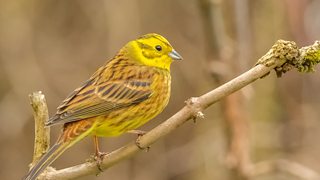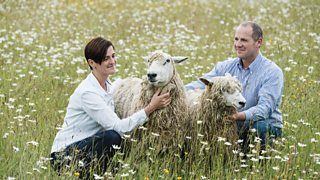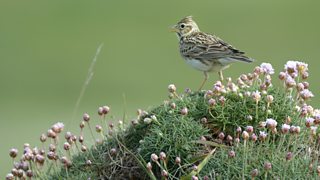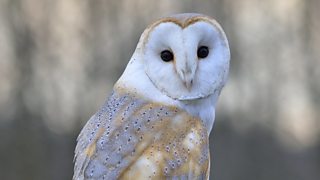Meet the farmers bringing back our native birds
National Trust
Partner organisation of the Watches
When was the last time you saw the bright flash of a yellowhammer? Or heard the gentle song of a turtle dove?

Yellowhammer by Davie ch on Flickr
Sadly, farmland birds have declined rapidly in the last few decades, meaning our chances of seeing these native species are fewer and further between. Yellowhammer numbers have fallen since 1970. Skylarks by 51%. The turtle dove, immortalized in the lyrics of The 12 Days of Christmas, is now so rare it’s on the brink of extinction. Our landscapes and the way we use them have changed so much that wildlife hasn’t been able to keep up.
But work is happening to reverse this trend. Sustainable farming with nature in mind can reap rewards for our country’s dwindling birds, whether it’s by laying hedgerows, leaving field margins to flower, introducing conservation grazing cows or cutting down on chemicals - or a host of other methods. Here are three farms leading the way:
‘The two have to go hand in hand’
Mel and Jonty Brunyee are conservationists at heart. Their farm on the Sherborne Park Estate in the Cotswolds is a rare haven for corn buntings and yellowhammers, following years of farming in harmony with nature.

Mel and Jonty Brunyee
Wildflower meadows cover half the farm and are bustling with life. Alongside the fields, which are grazed by the couple’s rare breed sheep and traditional cattle, are hedgerows full of berries and unharvested margins. These grassy borders are ideal for the corn bunting – a small, stout bird which needs good cover to nest in and plenty of spiders and insects to eat. It is one of several species that has seen a resurgence on the estate.
“We believe that food production doesn’t have to come at the expense of the environment. The two have to go hand in hand,” Mel says.
“A different kind of crop – biodiversity”
In Pembrokeshire, the National Trust has been working with its tenant farmers to boost bird numbers by reducing pesticide use, sowing crops for winter food and protecting hedgerows.

Gina and Peter Smithies
Now, rare species such as yellowhammer are making a comeback. According to a , numbers of the golden bird had quadrupled from the previous year.
Peter and Gina Smithies of Trehill Farm are involved in the annual survey and have been managing the land for nature since 2003 – when they turned the farms’ clifftop fields, which had limited yields, into coastal habitat.
Peter says: “We had a great opportunity to manage the marginal land for a different kind of crop – biodiversity.”
Twenty years later and the 600-acre site, which produces potatoes as well as rearing cattle and sheep, is still supporting a productive yet nature-rich lowland farm. Hedgebanks, coastal heath, grassland, and wildlife-friendly crops provide a wealth of space and food for birdlife.
Low intensity grazing has allowed skylarks and choughs to thrive, while stonechat, whitethroat and linnets abound in the heather and gorse.

Skylark by Harry Davies
And bird populations could be in for another boost thanks to support from players of People’s Postcode Lottery which will see two farms in the area improved for wildlife as part of the Trust’s Bluebells and Yellowhammers scheme.
“The barn owls nest here every year”
At Hill Top Farm in the Yorkshire Dales, the bird life has an unlikely ally: Belted Galloway cows. The hardy cattle were introduced by Neil Heseltine and his partner Leigh Weston in 2004 as part of a new grazing regime. As a result, native plant species have flourished, providing food for insects and fertile foraging ground for rare curlews.

Neil at Hill Top
The restoration of a traditional hay meadow has further increased biodiversity on the land – and proven the ideal hunting ground for a family of barn owls.
“We first noticed the barn owls 10 years ago and they’ve nested here every year since. The traditional barns on the farm provide a safe place to roost and the increase in voles as a result of the habitats we’ve created means there’s plenty of food”, Neil says.
The loss of old barns in many parts of the UK has left barn owls with fewer places to shelter, but Hill Top has become a haven. Chicks are ringed and monitored each year, providing important information on the outlook of this much-loved species.

Barn owl by Garry Prescott on Flickr
